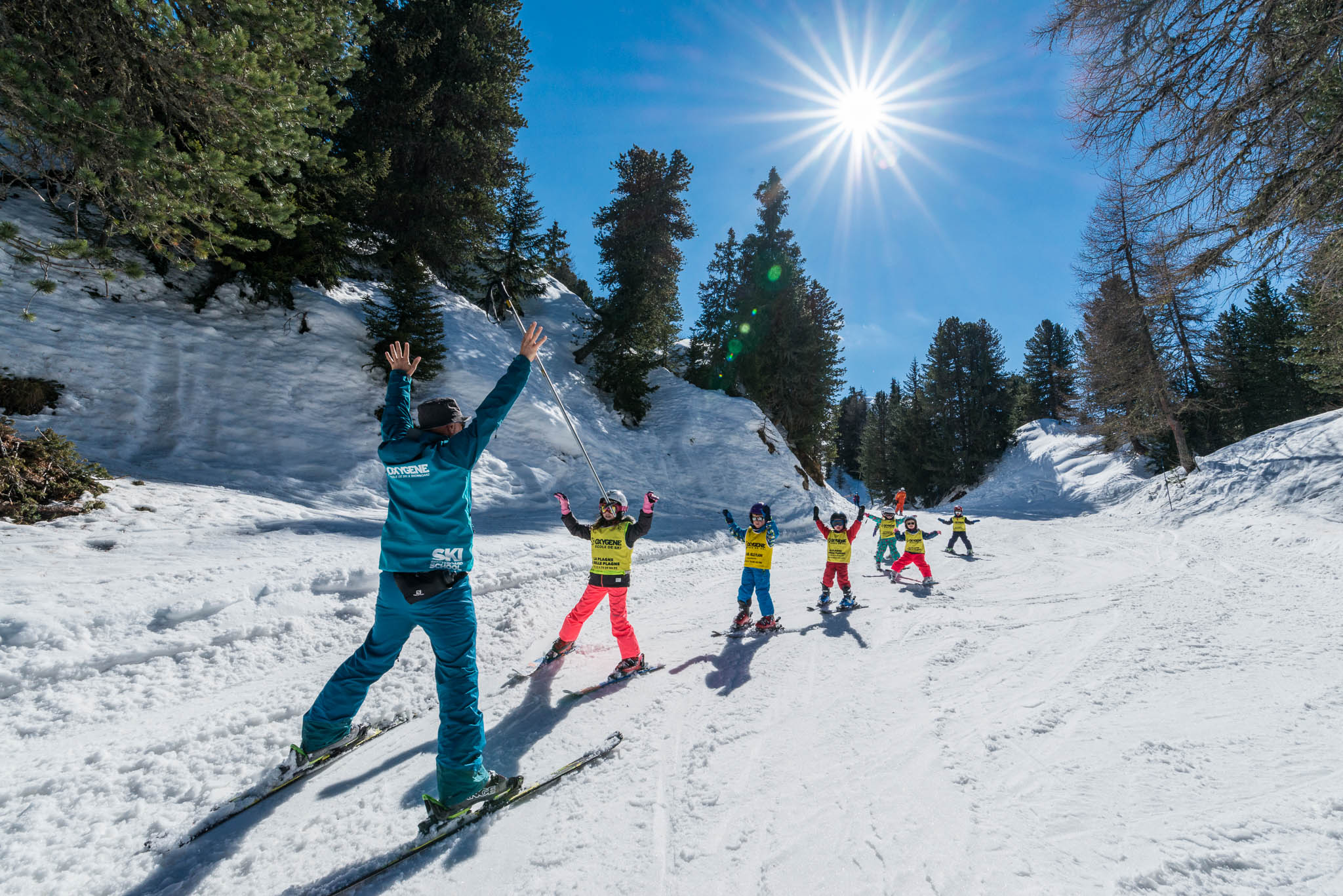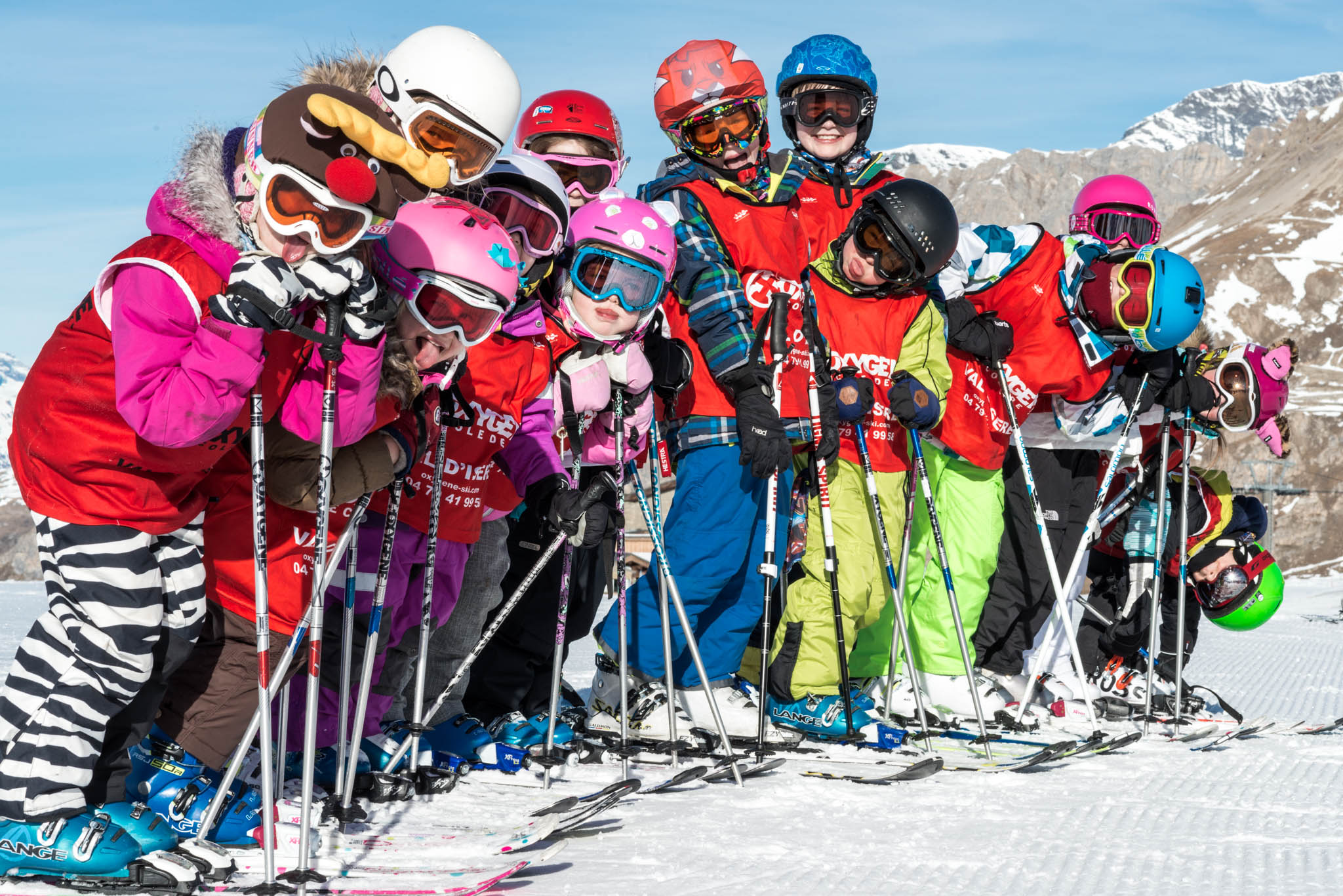OUR TOP TIPS FOR THEIR FIRST DAY OF SKI SCHOOL.
From helmet hair to ski socks and boots, we uncover exactly how you should dress your children for their first day at ski school.
We understand that the first day at ski school marks an important milestone for both you and your child. On top of the usual stress of family-holiday prep, you’re now met with the unenviable task of introducing your little one to the highs and lows of learning to ski. What with all the extra clothing and equipment to consider – thermals, socks, skis, poles – it’s little wonder that your stress levels are summiting too.
Here’s our top tips for a smooth start to ski school this season.
LAYERS: QUALITY NOT QUANTITY
Thinking bigger the better? Wrong. When it comes to layers on the mountain, it’s all about quality over quantity.
Avoid the bulk. Contrary to what we’re led to believe, bulky items such as heavy hooded fleeces and oversized jackets may not only hinder your child’s range of movement and flexibility on skis, but may even prevent healthy air-circulation thanks to unbreathable fabrics. Children are therefore more likely to become sweaty and agitated, thus increasing the dangerous temptation to remove the hoodie while out in the cold.
To prevent this, opt for the three-layer principle on the top half of their body and one or two layers (depending on the temperatures on their legs). Layer 1 should be a thin thermal (either synthetic or merino). Layer 2 should be a fleece top (nothing bulky) or jumper. Layer 3 should be a waterproof ski jacket. Follow this advice and you are guaranteed to keep your child warm while allowing for freedom of movement.
Psst: Did we mention that Merino wool is famous for its great breathability, meaning they’ll stay fresh for longer? That’s right, you’ll have less in the laundry pile and the kids can stay warm and snug all-holiday long. Result.
PLAITS ARE WHERE IT’S AT
If you’re a parent to girls or boys with long locks, this bit is for you. Helmets can only do their job if they’re nice and snug.
Avoid ponytails or big hair accessories. Uncomfortable, these can actually lift and reposition the helmet, potentially making it just as dangerous as skiing without one.
Plaits are a great solution; super cute and nice and neat, their typically ‘flat’ structure prevents tangling while also encouraging the helmet to fit properly. Oh, and they’re great at preventing knots, which means less-painful hairbrush sessions and fewer tears back at the chalet.
PUT A SOCK IN IT
We’re sure you’ve all heard of the phrase “fits like a glove”. Well that’s exactly what we want from our children’s ski socks.
Avoid baggy or slightly oversized socks “they’re sure to grow into”. Surplus fabric is more likely to form creases around the ankles, making the boots uncomfortable and harder to fit, thus hindering the much-needed support to their delicate heels.
Try opting for ski-specific socks if possible. They don’t need to be super high tech, just a good fit.
Psst: If in doubt, opt for a size smaller – thanks to ski socks’ elastic nature, you’ll be surprised how far they can stretch and mould to those tootsies. Mmm, nice and snug.
MAKE THE BOOTS FIT
Just like Cinderella found out, when it comes to footwear – it’s all about the fit. The wrong pair of ski boots can easily result in injury, so we’re after support for both control and comfort. According to ski professionals, boots are in fact the most important piece of equipment and can make or break a child’s (or adult’s) ski experience.
Avoid loosely done up or oversized boots that resemble a pair of wellies. If they can go on the wrong foot, they’re definitely not the right size.
Why not take your boots and get fitted by a professional at a ski hire shop, or in the chalet by a mobile fitting service like Oxygene? And, if you’re still not sure, just ask the instructors to double-check them before the lesson to make sure they’re fastened correctly and Cinderella perfect. Double buffer.
HAPPY HANDS
It’s pretty cold up here in the mountains, so protecting our extremities, including those little mitts is extra important. With so many gloves and ski-accessories on the market (most of which are littered with confusing lingo and technical jargon), it can be difficult to find the perfect pair for your child. We thought we’d give you a helping hand.
Avoid woollen gloves. These soak up water like a sponge, which can leave your little one with wet and cold hands all lesson long.
Look for insulated synthetic or leather gloves. Designed to offer advanced weather enduring protection, they control the transfer of heat from within the glove to manage moisture and improve comfort in all conditions. Mmm, we love warm and dry hands.
So, that’s a wrap. Here’s to the best first day at ski school, from the Oxygene team.



